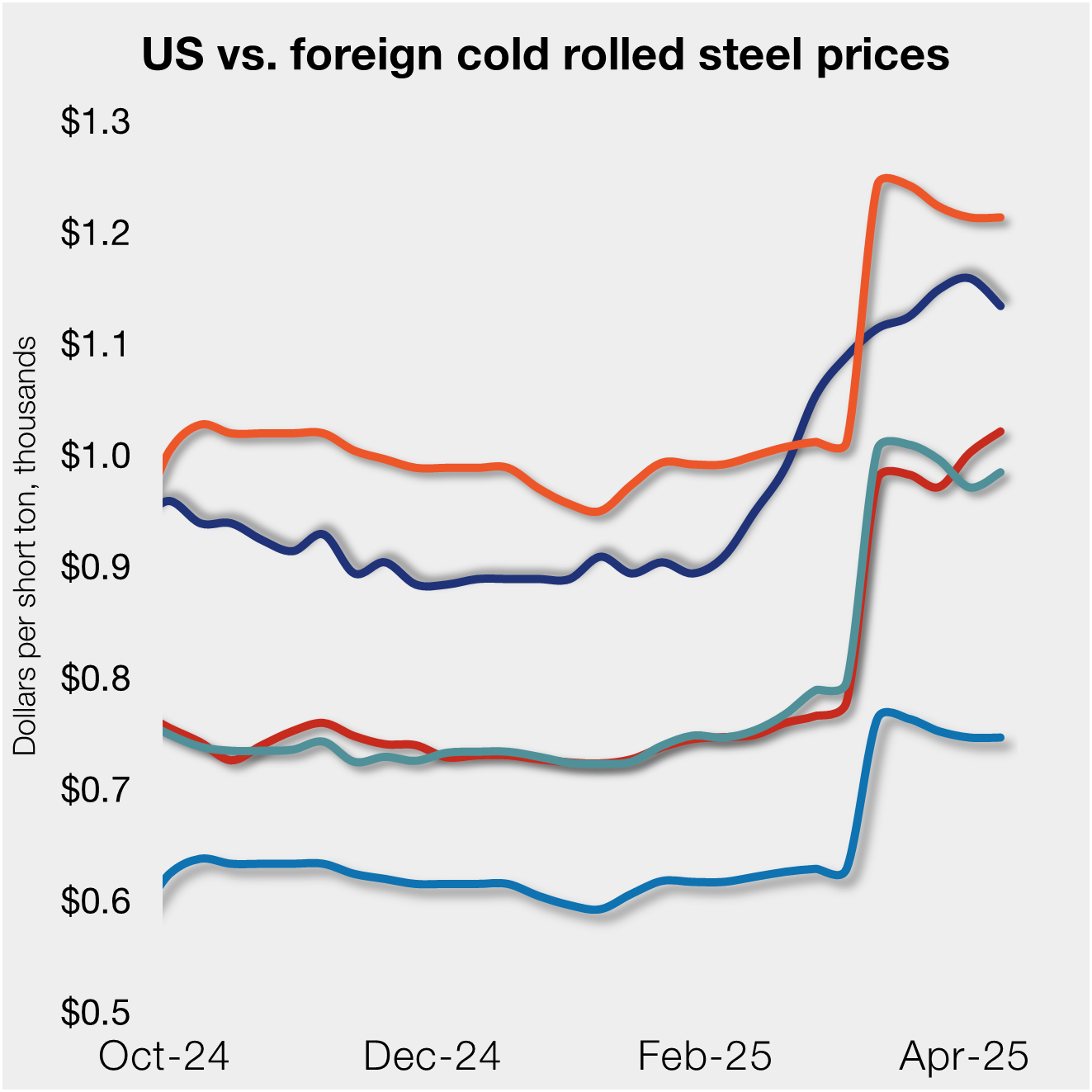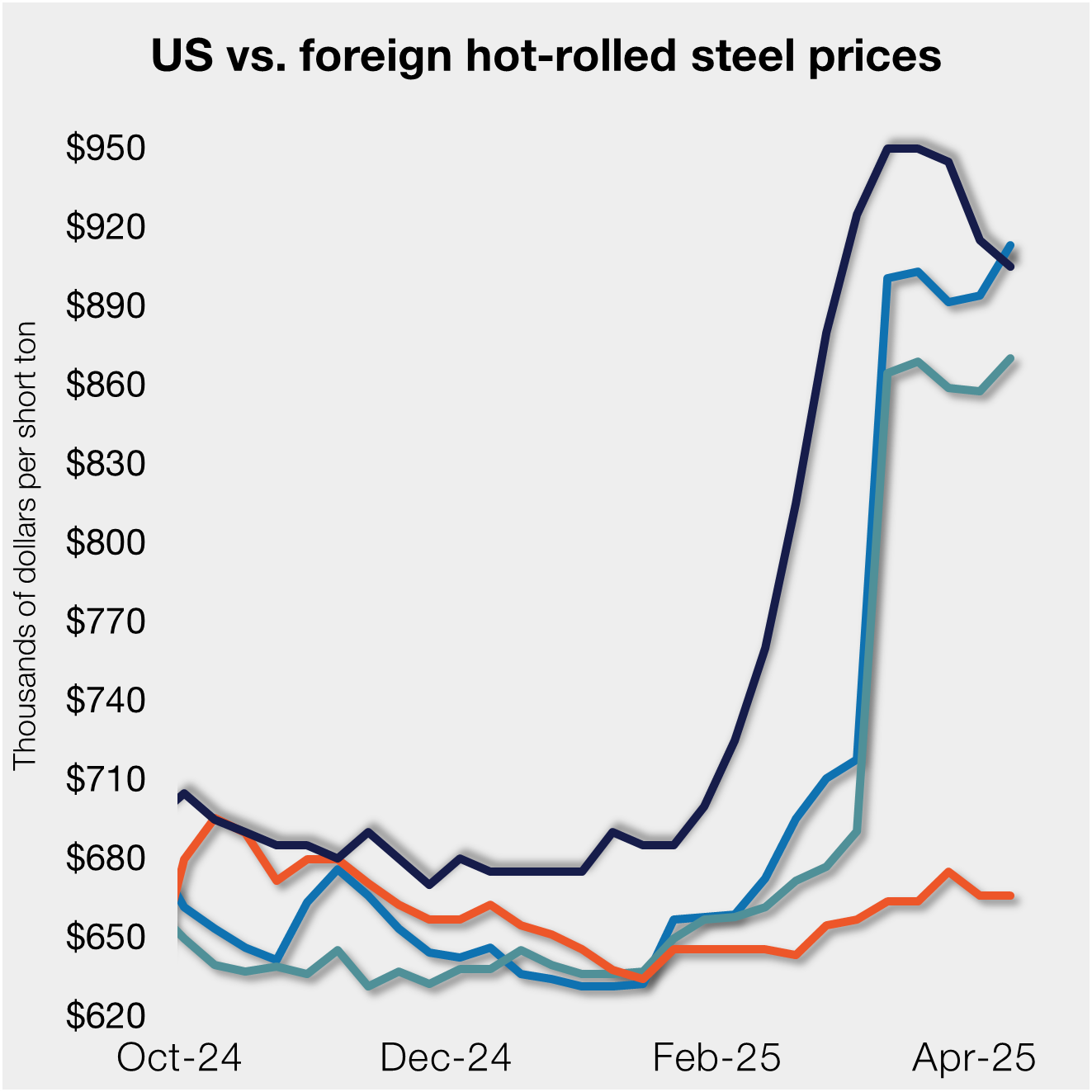Steel Products
Construction Employment Increases in November
Written by Sandy Williams
December 27, 2017
Construction firms are encouraged by recent regulation cuts and passage of the tax reform bill. The Associated General Contractors of America notes that firms are adding jobs in anticipation of stronger market conditions in 2018.
Between October and November, 39 states added construction jobs. Forty states added construction jobs between November 2016 and November 2017.
“There were robust construction gains in most parts of the country as the economy continues to expand,” said Stephen E. Sandherr, chief executive officer for the association. “Demand should continue to grow as newly enacted tax cuts and regulatory reforms stimulate even more widespread economic growth.”
“This is one of the best business climates many firms have experienced in over a decade,” Sandherr said. “While Washington needs to address infrastructure funding, workforce shortages and multi-employer retirement reforms, 2018 looks to be a strong year for the industry.”
California added the most construction jobs (48,400 jobs, 6.2 percent) during the past year. Other states adding a high number of new construction jobs for the past 12 months include Florida (41,800 jobs, 8.7 percent), Texas (23,900 jobs, 3.4 percent), New York (12,600 jobs, 3.4 percent) and Pennsylvania (12,000 jobs, 4.6 percent). Nevada (13.8 percent, 10,900 jobs) added the highest percentage of new construction jobs during the past year, followed by Rhode Island (13 percent, 2,400 jobs), New Hampshire (10 percent, 2,600 jobs), Oregon (9.7 percent, 9,100 jobs) and Florida.
Ten states shed construction jobs between November 2016 and November 2017, while construction employment was unchanged in the District of Columbia. Missouri lost the highest number of construction jobs (-6,500 jobs, -5.3 percent), followed by Iowa (-6,100 jobs, -7.5 percent), North Carolina (-3,100 jobs, -1.5 percent) and North Dakota (-1,600 jobs, -4.8 percent). Iowa lost the highest percentage for the year, followed by Missouri, North Dakota, Montana (-3.5 percent, 1,000 jobs) and South Dakota (-1.7 percent, -400 jobs).
Among the 39 states that added construction jobs between October and November, Texas added more than any other state (8,200 jobs, 1.1 percent), followed by Florida (6,200 jobs, 1.2 percent), New York (5,300 jobs, 1.4 percent), Indiana (4,900 jobs, 3.6 percent) and Pennsylvania (3,400 jobs, 1.4 percent). Alaska added the highest percentage of construction jobs for the month (4.5 percent, 700 jobs), followed by Indiana, Nebraska (2.6 percent, 1,300 jobs), Rhode Island (2.5 percent, 500 jobs) and West Virginia (2.5 percent, 800 jobs).
Eleven states lost construction jobs between October and November, while construction employment was unchanged in D.C. Maryland lost the most construction jobs for the month (-1,900 jobs, -1.1 percent), followed by Oklahoma (-1,400 jobs, -1.7 percent) and Connecticut (-1,300 jobs, -2.2 percent). Vermont (-3.2 percent, -500 jobs) lost the highest percentage of construction jobs, followed by Wyoming (-2.9 percent, -600 jobs) and Montana (-2.2 percent, -600 jobs).
{loadposition reserved_message}

Sandy Williams
Read more from Sandy WilliamsLatest in Steel Products

SMU flat-rolled market survey results now available
SMU’s latest steel buyers market survey results are now available on our website to all premium members. After logging in at steelmarketupdate.com, visit the pricing and analysis tab and look under the “survey results” section for “latest survey results.” Past survey results are also available under that selection. If you need help accessing the survey results, or if […]

CRU tariff webinar replay now available
CRU’s latest webinar replay on how Trump’s tariffs affect the global steel market is now available on our website to all members. After logging in at steelmarketupdate.com, visit the community tab and look under the “previous webinars” section of the dropdown menu. You’ll find not only this special CRU webinar but also all past Community […]

US, offshore CRC prices diverge
US cold-rolled (CR) coil prices declined this week, slipping for the first time since early February. Most offshore markets deviated, moving higher this week.

Construction growth slowed in March on tariff woes: Dodge
The decline comes after reaching a record high in January to kickstart the year.

Return of S232 zapped gap between US and EU HR prices, Asian HR remains cheaper
Domestic hot-rolled (HR) coil prices declined this week for a third straight week. Most offshore markets bucked the trend and gained ground. Uncertainty in the US market around tariffs, especially after “Liberation Day,” caused US prices to slip as buyers moved to the sidelines. It’s unclear to date whether the 90-day pause on the more […]
